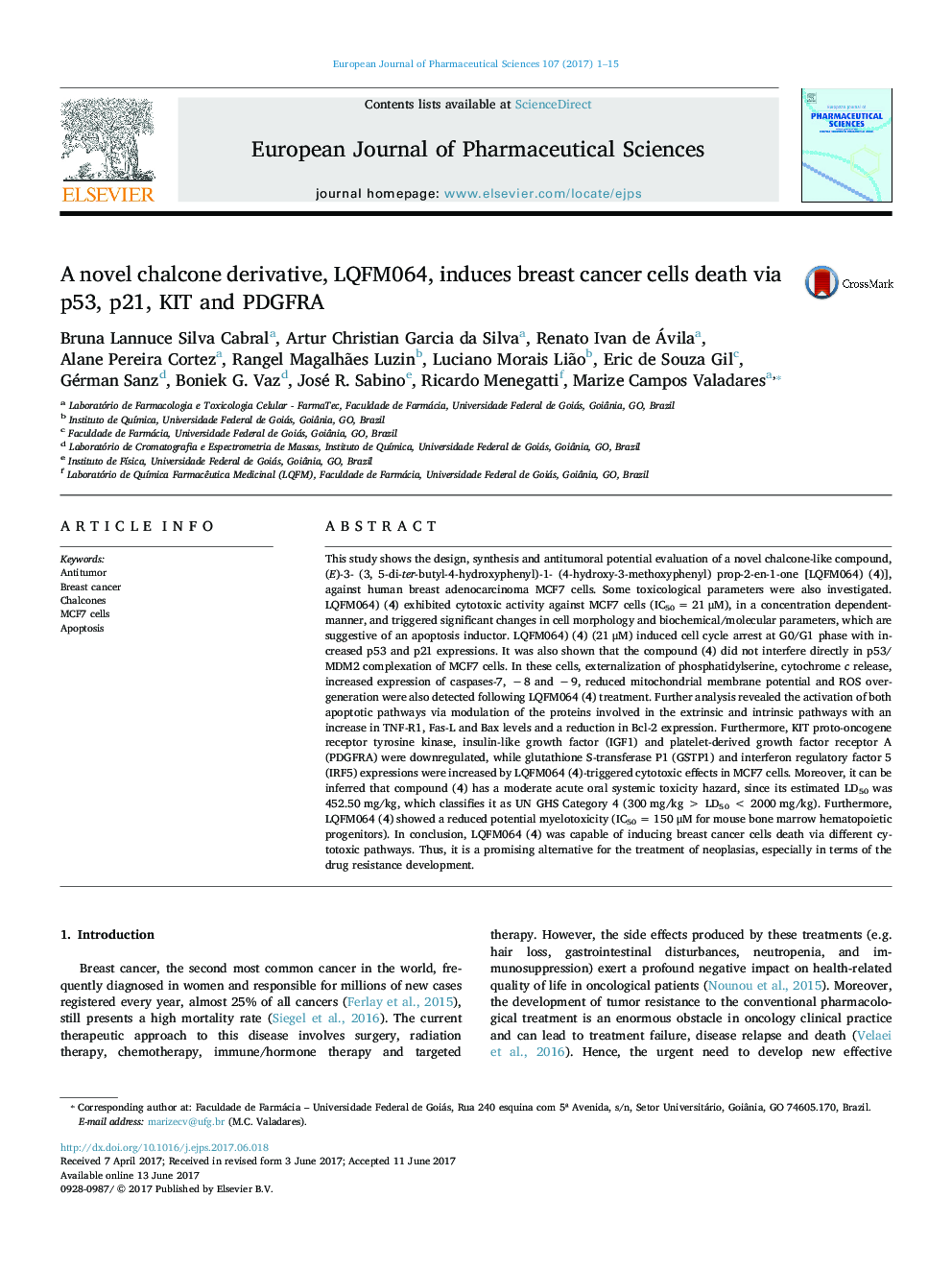| Article ID | Journal | Published Year | Pages | File Type |
|---|---|---|---|---|
| 5547579 | European Journal of Pharmaceutical Sciences | 2017 | 15 Pages |
This study shows the design, synthesis and antitumoral potential evaluation of a novel chalcone-like compound, (E)-3- (3, 5-di-ter-butyl-4-hydroxyphenyl)-1- (4-hydroxy-3-methoxyphenyl) prop-2-en-1-one [LQFM064) (4)], against human breast adenocarcinoma MCF7 cells. Some toxicological parameters were also investigated. LQFM064) (4) exhibited cytotoxic activity against MCF7 cells (IC50 = 21 μM), in a concentration dependent-manner, and triggered significant changes in cell morphology and biochemical/molecular parameters, which are suggestive of an apoptosis inductor. LQFM064) (4) (21 μM) induced cell cycle arrest at G0/G1 phase with increased p53 and p21 expressions. It was also shown that the compound (4) did not interfere directly in p53/MDM2 complexation of MCF7 cells. In these cells, externalization of phosphatidylserine, cytochrome c release, increased expression of caspases-7, − 8 and − 9, reduced mitochondrial membrane potential and ROS overgeneration were also detected following LQFM064 (4) treatment. Further analysis revealed the activation of both apoptotic pathways via modulation of the proteins involved in the extrinsic and intrinsic pathways with an increase in TNF-R1, Fas-L and Bax levels and a reduction in Bcl-2 expression. Furthermore, KIT proto-oncogene receptor tyrosine kinase, insulin-like growth factor (IGF1) and platelet-derived growth factor receptor A (PDGFRA) were downregulated, while glutathione S-transferase P1 (GSTP1) and interferon regulatory factor 5 (IRF5) expressions were increased by LQFM064 (4)-triggered cytotoxic effects in MCF7 cells. Moreover, it can be inferred that compound (4) has a moderate acute oral systemic toxicity hazard, since its estimated LD50 was 452.50 mg/kg, which classifies it as UN GHS Category 4 (300 mg/kg > LD50 < 2000 mg/kg). Furthermore, LQFM064 (4) showed a reduced potential myelotoxicity (IC50 = 150 μM for mouse bone marrow hematopoietic progenitors). In conclusion, LQFM064 (4) was capable of inducing breast cancer cells death via different cytotoxic pathways. Thus, it is a promising alternative for the treatment of neoplasias, especially in terms of the drug resistance development.
Graphical AbstractFigure optionsDownload full-size imageDownload high-quality image (88 K)Download as PowerPoint slide
